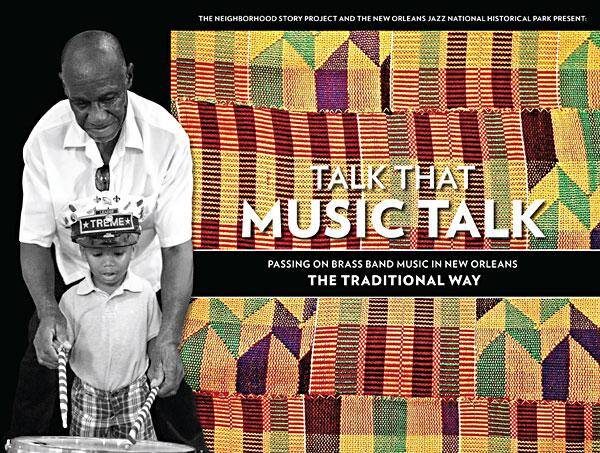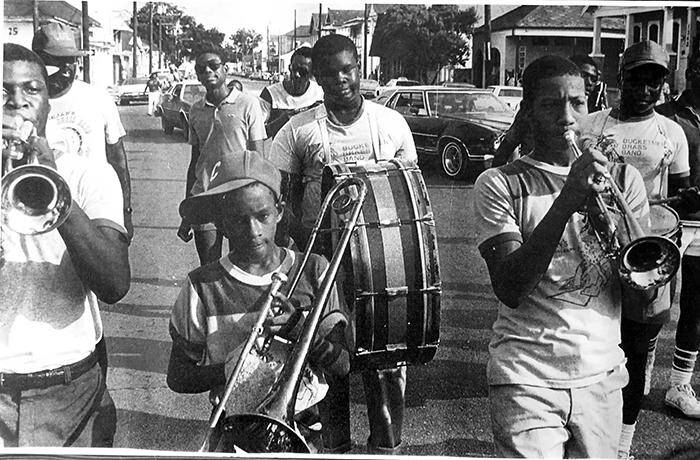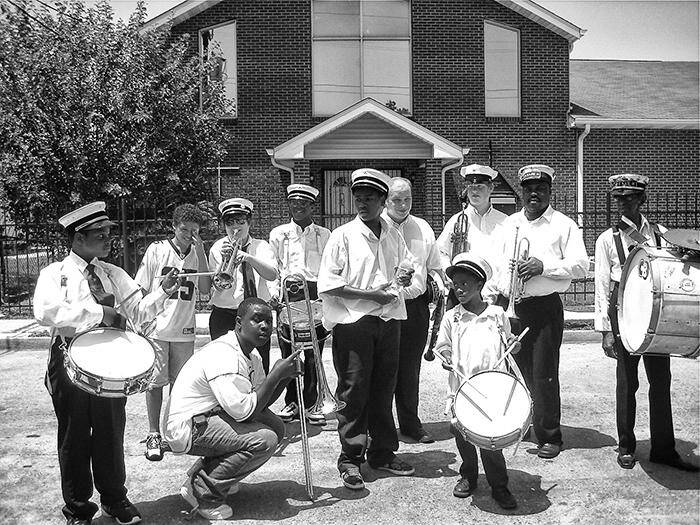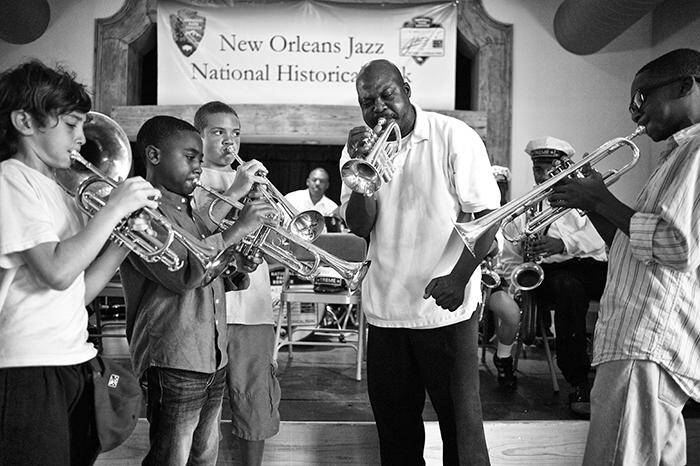 There are two large beautiful coffee table books about New Orleans street culture in recent circulation. I reviewed Freedom’s Dance: Social Aid and Pleasure Clubs in New Orleans several months ago. That book focused on the clubs that present parades, the clothes they wear, the dancing, and the reason for it all. It featured large color photographs of well-adorned Second Liners taken by local photographer Eric Waters.
There are two large beautiful coffee table books about New Orleans street culture in recent circulation. I reviewed Freedom’s Dance: Social Aid and Pleasure Clubs in New Orleans several months ago. That book focused on the clubs that present parades, the clothes they wear, the dancing, and the reason for it all. It featured large color photographs of well-adorned Second Liners taken by local photographer Eric Waters.
New Orleans street culture is so large and so wonderful that there is little overlap between that book and this one, and excellent reasons for the Nolaphile to acquire both.
Freedom’s Dance focused on the clubs, Talk That Music Talk turns the lens, and the microphone on the bands those clubs hire. It is part of The Neighborhood Story Project, a collaborative ethnography effort founded in 2004 to document New Orleans’ unique cultures.

The book weaves together interviews with people who have shaped the modern brass band experience in New Orleans with a focus on those bands and educational programs preserving the traditional style of play.
Rachel Breunlin, who is a co-author of this book and teaches at UNO, conducts some of the interviews. The others are lead by Bruce Sunpie Barnes, who is a musician, Chief of the North Side Skull and Bones Gang, and ranger at the New Orleans Jazz National Historic Park. His excellent black and white photographs illustrate most of the modern portions of the book. To create a compelling narrative Breunlin followed up with the interviewees in a collaborative process. The result is comfortable flow from story to story and voice to voice that really keeps the pages turning.
The first third of the book entwines early efforts to preserve New Orleans street culture with the unique flavor of the city’s civil rights history. Local members of the Congress for Racial Equality (CORE) were also involved with founding Tambourine and Fan, a community organization that sponsored everything from a football team to the Bucketmen, the parading group that eventually became the Sudan Social Aid and Pleasure Club.
These community activists were also involved in creating Preservation Hall and the Mardi Gras Indian Super Sunday which helped transition Indian culture into a source of local pride.

The first portion of the book also looks at the legacy of Danny Barker and the Fairview Baptist Church Marching Band which launched the modern era of funky street bands. Other interesting evolutions are the development of the Dirty Dozen Kazoo Band into one of the most well-known brass bands in the world and similarly the less than serious Pair A Dice Tumblers into its high-quality offshoot the Storyville Stompers.
The second portion of the book focuses on those bands and programs still nurturing the traditional style of play. The Black Men of Labor was founded to preserve traditional brass band music after the death of Danny Barker and are associated with the project behind this book. They most directly carry that civil rights era multidimensional spirit into today.
Bruce Sunpie Barnes founded the Music For All Ages (MFAA) program in 2005. It brings together musicians over 60 with musicians under 18. Most of the interviewees are associated with that program but they illustrate through their stories that passing the music on is a community-wide process involving both institutional and informal mentorship.
Other mentorship and training organizations that get mentioned are Tipitina’s Sunday Program, the New Orleans Traditional Jazz Camp youth sponsorships, Project Prodigy, and various school and college bands. Many of the musicians passing it on have done so as school band instructors.

Rebirth Brass Band inspired groups now dominate the scene and most young black men in the city with an interest in New Orleans music create bands that integrate modern sounds from funk to bop freely into their playing. The book highlights the few of them who have either chosen to transition to traditional playing or find room to play both styles. It also interviews young white locals who have become involved in traditional brass bands through local mentorship programs like MFAA. It distinguishes these locals from the young, mostly white musicians who have moved to the city to play traditional jazz. A case in point is the Red Hot Brass Band, made up of young traditional brass players who have come out of either (or both) the MFAA and The New Orleans Traditional Jazz Camp.
An interview with college-age musicians near the end of the book is illuminating. They freely mention the multitude of camps and programs that shaped their interests and honed their skills. They also speak of personal relationships with teachers much as their teachers had with men with names like Celestin, Barbarin, Paulin, and French.
In New Orleans learning traditional jazz isn’t a lonely teenager playing along with records- many of these kids have never even heard those records. Instead, they grew up watching relatives and community elders participate in Second Lines and admiring men on the block who work long hours for local utility companies but jet off to play festivals in Geneva Switzerland. Passing it on is a community process both formal and personal and this book captures it brilliantly.
The interview format endears you to dozens of musicians alive and playing right now. I was looking forward to finishing this beautiful book so it could rest in proud display on my coffee table, but it is worth more than that. As a reference work of continuity and transition in modern New Orleans, I will find reasons to turn to it again and again.
Talk That Music Talk: Passing on Brass Band Music in New Orleans The Traditional Way!, by Bruce Sunpie Barnes and Rachel Breunlin, UNO Press
We encourage you to purchase this book through The Black Men of Labor who sponsor many programs within the community, http://thebmol.org/shop
- Item Weight : 3.9 pounds
- Hardcover : 240 pages
- ISBN-10 : 9781608011070
- ISBN-13 : 978-1608011070
- Dimensions : 12.2 x 1 x 9.1 inches
- Publisher : University of New Orleans Press; Pap/Cdr edition (December 29, 2014)



























